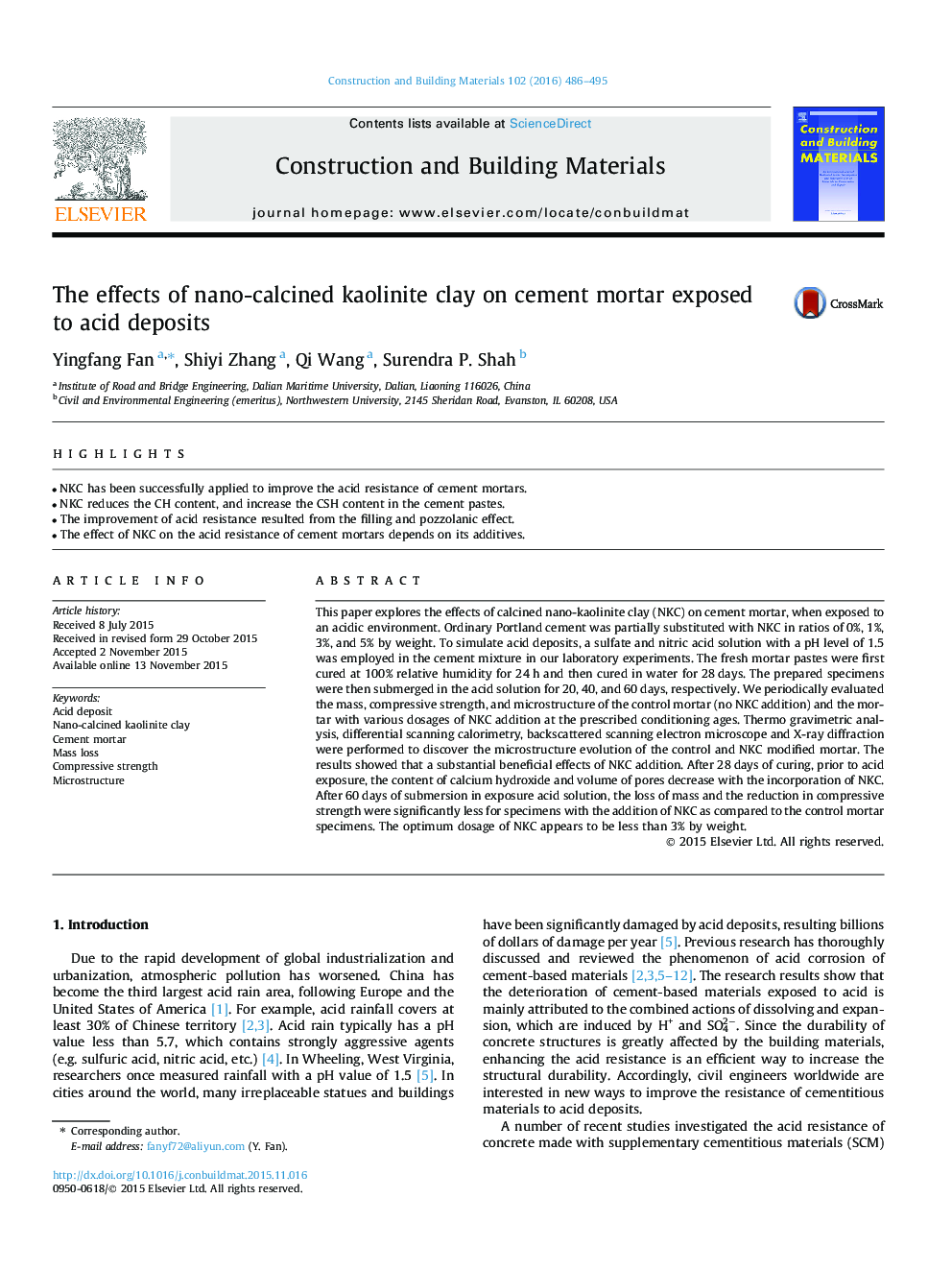| Article ID | Journal | Published Year | Pages | File Type |
|---|---|---|---|---|
| 10285063 | Construction and Building Materials | 2016 | 10 Pages |
Abstract
This paper explores the effects of calcined nano-kaolinite clay (NKC) on cement mortar, when exposed to an acidic environment. Ordinary Portland cement was partially substituted with NKC in ratios of 0%, 1%, 3%, and 5% by weight. To simulate acid deposits, a sulfate and nitric acid solution with a pH level of 1.5 was employed in the cement mixture in our laboratory experiments. The fresh mortar pastes were first cured at 100% relative humidity for 24Â h and then cured in water for 28Â days. The prepared specimens were then submerged in the acid solution for 20, 40, and 60Â days, respectively. We periodically evaluated the mass, compressive strength, and microstructure of the control mortar (no NKC addition) and the mortar with various dosages of NKC addition at the prescribed conditioning ages. Thermo gravimetric analysis, differential scanning calorimetry, backscattered scanning electron microscope and X-ray diffraction were performed to discover the microstructure evolution of the control and NKC modified mortar. The results showed that a substantial beneficial effects of NKC addition. After 28Â days of curing, prior to acid exposure, the content of calcium hydroxide and volume of pores decrease with the incorporation of NKC. After 60Â days of submersion in exposure acid solution, the loss of mass and the reduction in compressive strength were significantly less for specimens with the addition of NKC as compared to the control mortar specimens. The optimum dosage of NKC appears to be less than 3% by weight.
Related Topics
Physical Sciences and Engineering
Engineering
Civil and Structural Engineering
Authors
Yingfang Fan, Shiyi Zhang, Qi Wang, Surendra P. Shah,
